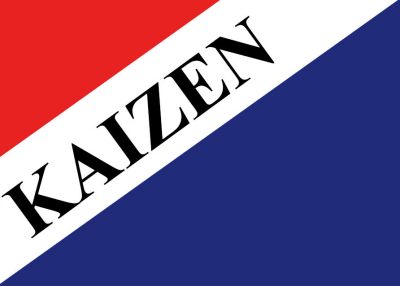By Enrico C. Mina
Management by Objectives
One of the most popular modern management tools is Management by Objectives, whereby the CEO defines the strategic results he wants the company to achieve by a certain date, and then cascades these to his direct subordinates and to their subordinates all the way down the line. The results are defined in specific, measurable, challenging, and time-bound terms. Each manager at each level is expected to translate these strategic results into tactical and operating targets, which become performance standards. At certain reckoning dates, actual performance is compared to the targets, and appropriate rewards or sanctions are handed down. The process is shown in Figure 1.
|
Level |
|
Commitments |
|
CEO |
Corporate strategic results | |
|
↕ |
||
|
VPs/Functional Heads |
Functional/tactical results | |
|
↕ |
||
|
Middle managers |
Operating results | |
|
↕ |
||
|
Supervisors |
Operating results | |
|
↕ |
||
|
Rank & file |
Operating results |
While MBO can align everyone’s commitments towards the same set of overall goals, it suffers from the following weaknesses:
1.The overarching emphasis on results may make people focus purely on the ends without any regard for how they were achieved. People have been known to take unethical or illegal actions just to achieve their committed results. Or, they can play games with the system, such as overloading trade channels. just to meet sales targets.
2.Because the commitments are made by managers and supervisors specifically for their own units’ results, MBO can cause them to lose sight of the overall organizational system and its commitments toward customer satisfaction. They might undertake actions which bolster their own performance metrics but are detrimental to the overall organizational interest (e.g., a purchasing manager buys lower-priced materials from a new supplier just to meet his department’s goal of reducing procurement costs, even though this material is inferior in quality and will cause problems at the production or operations units).
3.Because the evaluation of performance hinges only on whether the committed results were obtained or not (regardless of the reason), failure is assumed to be completely the fault of the responsible person, without regard for other causative factors, such as an unfavorable economic environment, the presence of superior competition, inherent product or service quality problems, delays in delivery caused by distributors, etc. The blaming and criticism that follow unsuccessful achievement of a target can lead to demoralization and the loss of valuable human resources.
The Alternative: Policy Deployment
Japanese management gurus developed the concept of hoshin kanri, usually translated as Policy Deployment or Management by Policy. In Japanese usage, “policy” refers to the CEO’s strategic targets and the defined high-priority means by which to achieve them.
The Japanese CEO does the usual environmental scanning to identify opportunities and threats, and internal assessment to identify strengths and weaknesses. Then he defines the company’s strategic results to be achieved over a period of time in order to achieve a competitively superior fit between the organization and its business environment. But he also defines the small number of critical strategies that the company has to implement to achieve these results. For example, the CEO of an international airline may define as a strategic target the increase in its market share in trans-Pacific traffic from 15% to 25%. Then, he lays down three high-priority directions, in descending order of importance, as the means to achieve this.
1.The improvement of safety (essential to gaining the trust of all passengers and shippers)
2.The improvement of punctuality, i.e., on-time departures and arrivals in order to develop a reputation for reliability
3.The improvement of customer service
The descending order of importance communicates priorities very clearly; safety, for example, cannot be sacrificed for the sake of punctuality. Neither can punctuality be sacrificed for the sake of improving customer service.
These means-and-ends plans are cascaded to everyone in the organization, including its contractors and suppliers. The CEO’s direct subordinates are expected to translate the three primary strategies into end-results relevant to their function or unit. The Maintenance & Engineering Department, for example, may undertake the following initiatives:
1.Improve the quality of maintenance to prevent accidents due to equipment failures
2.Improve the maintenance and repair process cycle times so that aircraft can be dispatched on time for their flights
3.Improve the reliability of on-board facilities whose failure may not be life-threatening but will cause great inconvenience to passengers (e.g., clogging of aircraft toilets during a long flight).
The Flight Catering Department may undertake these initiatives:
1Improve food safety to prevent food poisoning, especially during long flights, the complete meals for which are pre-cooked before departure and then refrigerated and finally microwave-heated just before serving (cooking on is prohibited for safety reasons).
2.Improve the process of determining the exact number of meal sets for the passengers and crew of each flight and their complete delivery to the aircraft during the window time before departure. Any shortage of meal sets will delay departure.
3.Improve the ability to respond to passengers’ special meal requests for health or religious reasons and ensure that the proper meal sets are delivered in the correct quantities to the correct flight on time.
The Ground Services Department at the airport may undertake the following:
1.Improve the process of inspecting all incoming baggage and cargo to prevent harmful or dangerous substances (e.g., explosives) from being brought on board.
2.Improve the process of unloading and loading aircraft within the window time allowed so as not to delay departures.
3.Improve the reliability of baggage handling and routing to eliminate the possibility of lost or misrouted baggage.
The functional heads communicate these strategic initiatives to their subordinates and ask them to plan for their own initiatives that are consistent with and supportive of the overall directions. The process of planning for both means and ends extends all the way down to the rank and file, thus creating a “line-of-sight” alignment of individual goals and plans to the CEO’s goals and plans (Figure 2).
|
Level |
Means |
& |
Results |
Chain | |||||||
| CEO | Means |
↔ |
Results | ||||||||
| VPs/Heads | Means |
↔ |
Results | ||||||||
| Mid. Mgrs. | Means | ↔ | Results | ||||||||
| Supervisors | Means |
↔ |
Results | ||||||||
| Rank & File | Means | ↔ | Results |
Furthermore, the CEO emphasizes the systemic nature of the organization and calls on his subordinates to collaborate with one another in the pursuit of the overall strategic goals and plans. The Flight Catering Department, for example, depends on the Maintenance and Engineering Department for the maintenance and repair of the refrigerators and microwave heaters that are used to store and heat the meals, respectively. Flight Catering coordinates with Ground Services to determine the exact number of passengers checking in, with Flight Operations to determine the exact number of flight deck and cabin crew on duty for the flight, and with Sales and Reservations for the special meal requests of passengers. Ground Services depends on Maintenance and Engineering for the maintenance and repair of its baggage inspection equipment and its baggage and cargo transport equipment. Flight Operations gets training from Flight Catering for its cabin crew on proper food handling.
This network of reciprocal interdependencies is well understood and accepted in Policy Deployment environment. Consequently, when problems arise, the usual reaction is not to point an accusing finger at another department but to collaborate with one another in a cross-functional way to identify the underlying root causes and implement a permanent countermeasure so that the problem will never recur.
The literal translation of hoshin kanri is “managing by compass.” Imagine a fleet of ships under the command of an admiral. The entire fleet has only one compass—that which is held by the admiral. Once he determines the course, it is communicated to every single ship. All ships turn towards the common direction and sail at a coordinated pace, with each captain knowing his ship’s place and role in the fleet.
A company practicing hoshin kanri has a culture that embodies the three superordinate principles of kaizen:
1. A balanced emphasis on both processes and results
2. Total system focus
3. Non-blaming, non-judgmental behavior.
These three principles together comprise the foundations of kaizen culture. They cannot be separated. Like the legs of a tripod, all three are vital.







